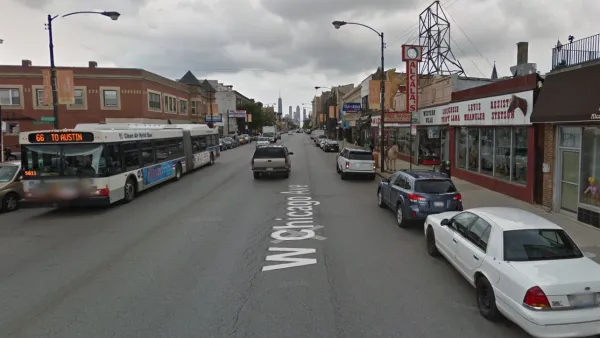Citizens and businesses owners are actively involved in modernizing parking policies and assets in San Diego in a district by district approach, writes San Diego parking guru Bill Keller.

In San Diego, old auto-oriented expectations, like free parking, die harder than in bigger denser cities like San Francisco and Chicago, writes downtown retailer-turned-parking-activist Bill Keller.
In San Diego, despite the growing population and a tightening supply, many locals still expect free parking – especially in beach communities. San Diego currently has about 5,700 metered spaces mostly charging a top rate of $1.25 per hour. Nearly all the metered spaces are in Uptown and Downtown where parking is a hot topic at neighborhood meetings.
Therefore, modernization of public parking management, particularly metered parking, has been slower and more incremental than in those bigger cities. The city has implemented a "community-up" district by district approach, creating Community Parking Districts. "This low-tech, neighborhood-up approach has become the hallmark of parking management in San Diego," writes Keller. It has empowered neighborhood residents and businesses to play a major role in setting parking policy. For example,
Since 2004, the Downtown Parking Management Group*, a volunteer board of residents and business members, has worked with City staff to improve utilization of street parking. An early pilot program targeted sections of East Village, Cortez Hill and the Marina District with very low meter usage . . .
During the pilot, for example, street parking in the Gaslamp Quarter remained at $1.25 per hour with a two-hour limit while several blocks of East Village from Eighth Ave to Park Blvd were converted to $1 per hour with a four-hour limit. East of Thirteenth, rates dropped to $.50 per hour with a nine-hour limit. This offered price sensitive workers and residents an option to walk a little and save.
The experiment worked. Over a two year period, meter utilization was up 106% and (despite the drop in rates) meter revenue was up 89%.
This community-based approach has resulted in a number of other incremental changes and refinements to metered parking which has both increased parking meter revenue and parking supply. More details are in the two part articles on UrbDeZine, with a third installment yet to come.
FULL STORY: Parking Management: San Diego Style (Part Two)

Analysis: Cybertruck Fatality Rate Far Exceeds That of Ford Pinto
The Tesla Cybertruck was recalled seven times last year.

National Parks Layoffs Will Cause Communities to Lose Billions
Thousands of essential park workers were laid off this week, just before the busy spring break season.

Retro-silient?: America’s First “Eco-burb,” The Woodlands Turns 50
A master-planned community north of Houston offers lessons on green infrastructure and resilient design, but falls short of its founder’s lofty affordability and walkability goals.

Test News Post 1
This is a summary

Analysis: Cybertruck Fatality Rate Far Exceeds That of Ford Pinto
The Tesla Cybertruck was recalled seven times last year.

Test News Headline 46
Test for the image on the front page.
Urban Design for Planners 1: Software Tools
This six-course series explores essential urban design concepts using open source software and equips planners with the tools they need to participate fully in the urban design process.
Planning for Universal Design
Learn the tools for implementing Universal Design in planning regulations.
EMC Planning Group, Inc.
Planetizen
Planetizen
Mpact (formerly Rail~Volution)
Great Falls Development Authority, Inc.
HUDs Office of Policy Development and Research
NYU Wagner Graduate School of Public Service




























